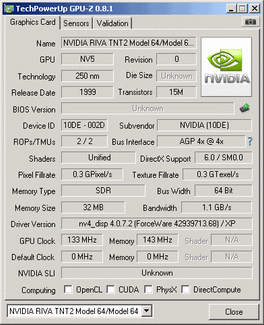Reply 20 of 30, by analog_programmer
- Rank
- Oldbie
bifflog wrote on 2023-07-20, 18:06:Does the lesser memory bus kneecap the performance? I would say what I am seeing thus far falls short of benchmarks...
Yep. And the pictures confirm that your TNT2 Pro is chinese made clone with 64bit memory bus, similar to mine dead cheapo TNT2 "half Pro" card.
from СМ630 to Ryzen gen. 3
engineer's five pennies: this world goes south since everything's run by financiers and economists
this isn't voice chat, yet some people, overusing online communications, "talk" and "hear voices"


